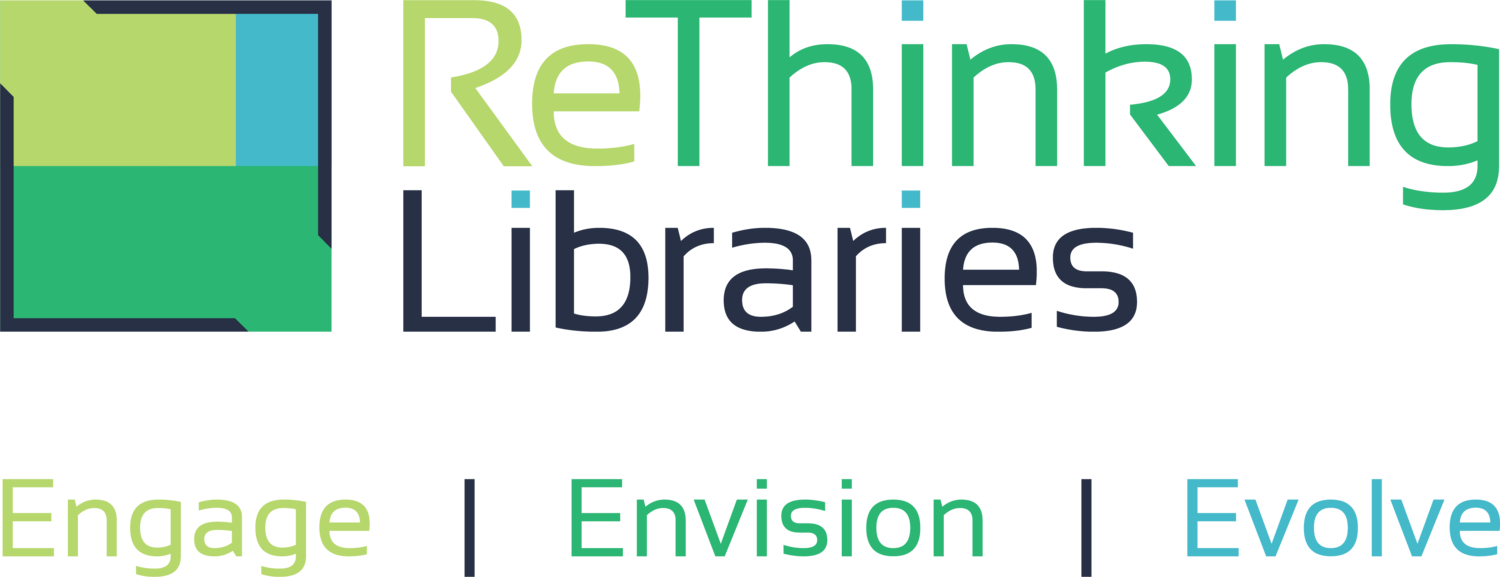A River Runs Through It: Embracing History to Shape the Future
Libraries are dynamic, evolving spaces that reflect the needs and aspirations of the communities they serve. The recent renovation at the Redford Township District Library (RTDL) in Redford, Michigan, is a testament to this, offering a fresh, vibrant space that is both functional and innovative.
The Planning Process: A Strategic Vision Comes to Life
The renovation at RTDL was the culmination of years of strategic planning, thoughtful space utilization, and community engagement. According to Garrett Hungerford, Library Director, the process began with the library's 2019-2023 Strategic Plan, developed in conjunction with Kimberly Bolan and Associates (now known as ReThinking Libraries). As part of the planning process, the team realized that many of the facility utilization goals could be met through a renovation of the library’s 20-year-old building.
To bring this vision to life, RTDL again partnered with KBA for space planning. The library’s building, although spacious at 65,000 square feet, had approximately 18,000 square feet of unfinished "expansion space." The strategic plan and space planning process helped to identify the best uses for this space, paving the way for a comprehensive renovation.
The architectural firm MCD Architects, which had designed the original building, was brought on board to develop the renovation plan. Hungerford speaks highly of the collaboration with MCD Architects, noting that they not only embraced the library’s vision but also brought a creative touch to the project. "They provided us with the most imaginative kids' space that I’m aware of in our region," Hungerford shared.
Inspired by the town’s history, the architects designed themed areas within the library, including meadows, woodlands, and wetlands. This thematic approach is reflected in both the carpeting and the soffit above, which together evoke the image of a river flowing through the space—a nod to the Rouge River that has shaped the town's history. The design ingeniously mirrors the stages of growth, with spaces evolving from simple, child-friendly environments to more sophisticated areas for older kids, much like the way the ecology of the region developed over time.
Funding the Transformation: A Community Effort
A project of this magnitude required significant funding, and the RTDL team turned to the community for support. The library’s operating millage was set at 1.4 mills, and an expiring debt millage of 0.66 mills provided an opportunity for creative financing. The library proposed a new 2 mill levy, slightly less than what residents had been paying, which would generate approximately $2.1 million in its first year.
Prior to the millage, RTDL had launched a "Love Your Library" campaign, hiring a marketing professional to raise awareness and engage the community. Building on the success of that campaign, the library launched a millage campaign, with voters passing the millage by a over two-thirds majority. This strong community backing allowed the renovation to move forward, ensuring that the library could continue to offer high-quality services while expanding its spaces.
Addressing Challenges: A Space for Everyone
One of the primary challenges the renovation aimed to address was the need for better-designed areas for different user groups. The teen space, in particular, had long felt like an afterthought. Initially designed with computers and open space, it had gradually become overtaken with stacks of books, leaving little room for teens to relax and engage with one another. The public wanted the teen collection to be accessible to adults, but there was also a clear need for a dedicated space where teens could hang out and feel at home.
The library’s L-shaped design also presented challenges. Spaces near the entrance could be loud and disruptive, with one end of the L designated for children’s activities and the other for nonfiction and study spaces. This layout created an environment where conversation spaces and study spaces were mixed closely together, leading to a less-than-ideal experience for patrons seeking a quieter, more focused environment.
A New Era: Exciting Changes and Future Plans
The renovation has brought about significant changes in the way spaces within the library are used. A dedicated teen space provides places to hang out, while the teen collection is nearby but accessible to all. One of the most exciting developments is the addition of six new study rooms and expanded computer space in a quieter area of the library. These new rooms cater to a variety of needs, from individual virtual meetings to larger group discussions. The existing spaces have also been reimagined to encourage more conversation and collaboration, ensuring that there is a dedicated space for everyone in the library.
Hungerford is particularly enthusiastic about the potential to attract more young patrons to the library. Drawing a parallel to McDonald’s playgrounds, he explains that the library isn’t in the business of providing play areas per se, but creating an inviting environment for kids in the library is a key strategy in “selling” literacy. The new children’s area, with its imaginative design and thematic elements, is expected to be a major draw for families, helping to instill a love of reading in the next generation.
While the indoor renovations are nearing completion, there is still work to be done. The contractors have worked in phases, with none fully complete as of the last punchlist review. However, the library remained open throughout the renovation, ensuring continued access to services despite the ongoing construction.
Looking ahead, the library staff is eager to settle into the new space and observe how the public engages with it. The next strategic plan, the first to be developed post-COVID, will likely focus on adapting to new patron habits and continuing to evolve the library’s offerings to meet changing community needs.
Through careful planning, creative design, and strong community support, RTDL has transformed its space into a vibrant, welcoming environment that meets the needs of patrons of all ages. Libraries can take inspiration from RTDL’s journey, recognizing that the heart of our work lies in creating spaces that not only house collections but also foster connections, learning, and growth.



